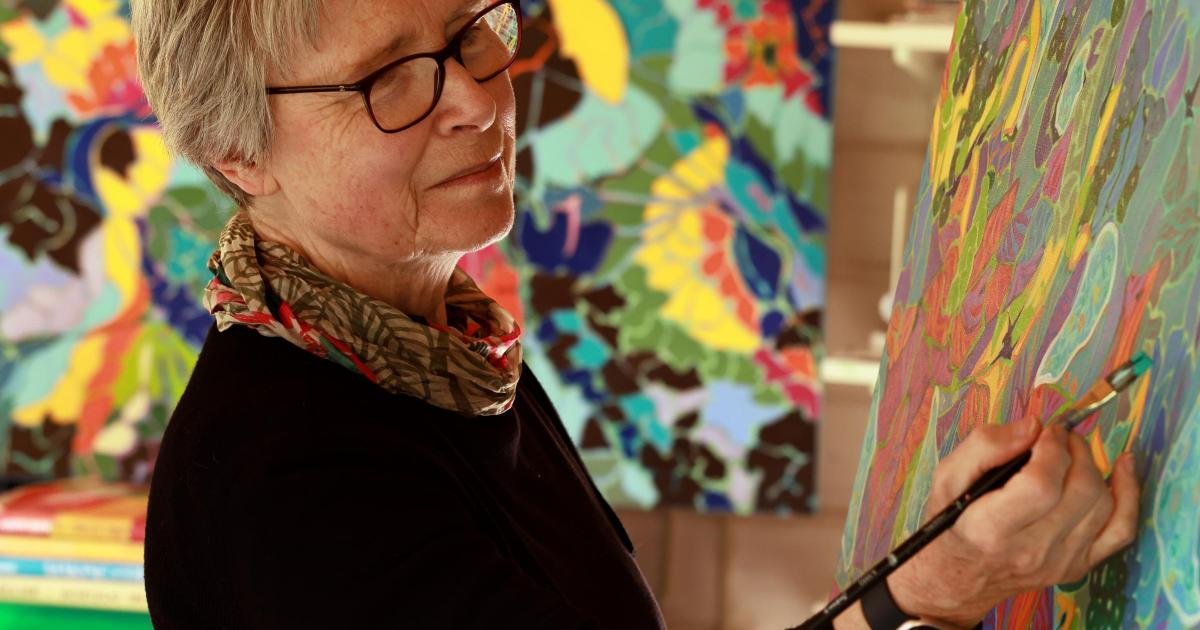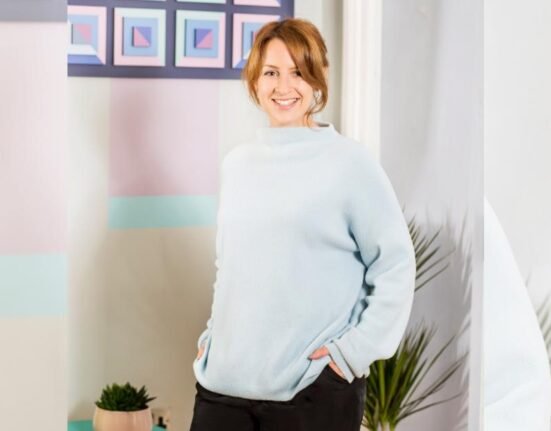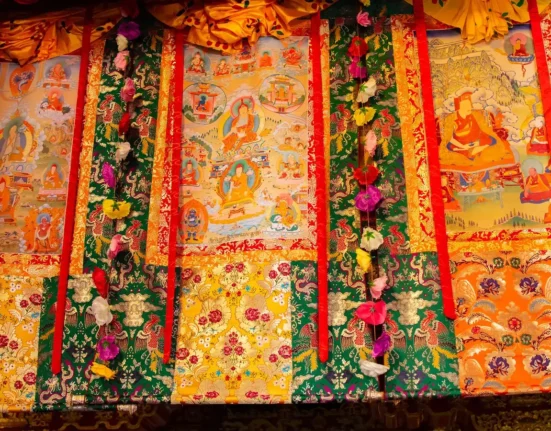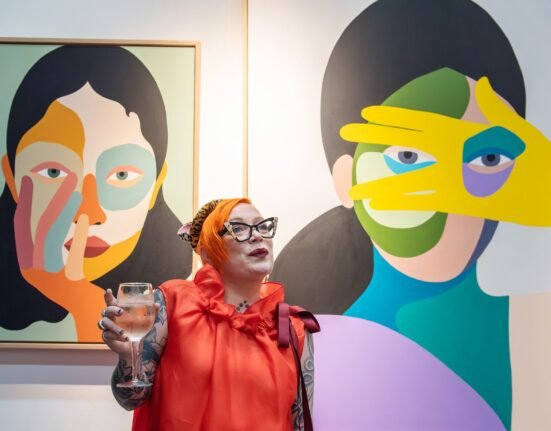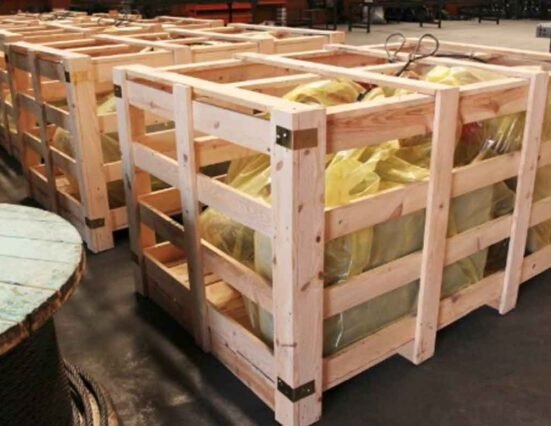Her father was a civil engineer and passed his aptitude for maths on to her. Her Italian mother was a colourful character ‘vibrant and visual’. ‘She was very funny and full of life. We had a small house, but she made it so beautiful with bits of texture and colour.’
The 74-year-old pursued physics gaining a degree and a PhD from Imperial College in London but would find time to visit the nearby V&A and attend lunchtime art lectures.
She told our sister magazine Hampshire Life: ‘I was one of twenty women in a year of 200 doing physics, by the end of the first year there were only 10 of us left. The physics department was across the street from the Royal College of Art, we used to eat there because the food was so much better!’

After the birth of her daughter, Tessa began to study painting, attending as many classes as time would allow without the constraints of taking exams or producing reports.
But her interest in depicting science in art came after an illness. ‘In my forties, I was not expected to survive. When I recovered enough, I went to see the head of molecular sciences at the Southampton University Hospital and asked him to tell me about my immune system. I wanted to know how it all worked.’

‘I went to a conference about visualisation of science and met the guy who wrote one of the first three dimensional graphical models of proteins. I played around with it and with molecules in the immune system and drew from it – those pieces are now on display in the lab in the science department of Southampton Hospital. These complex systems interested me – you couldn’t make the immune system up its incredibly wonderful and complicated. It doesn’t have a script it just builds itself. As I got stronger and better, I started looking elsewhere for inspiration and I got totally wrapped up with the ecosystems around us and that’s what I’ve been working on ever since.’
Through her painting Tessa tries to express the complexity, flexibility and robustness of ecology, but also the fragility of these complex systems, from the biodiverse ecosystem of a forest, to the way the oceans effect the development of a storm.

Tessa works from a studio, her ‘wooden shed’ as she calls it, in the garden of her home in Nursling, on the water meadows of the Test near Romsey. ‘Wood is such a nice material, it just feels different. I love that moment when I come in and close the door. I can just relax in here and be myself,’ she explains. Home is shared with her husband Malcom, a retired astronomer, although she admits that scientists rarely retire.
Working in acrylic to get the colour right, Tessa uses numbered notebooks each with lots of little swatches of colour alongside other colours to get the feel of what will work. Artworks can take weeks to evolve.
‘I work in layers and I love that way of working.

The process starts with a colour wash, often beginning with a yellow. ‘I love that sort of sunlight and life coming through the painting. Sometimes I use light blue and even red. Then I draw using a very thin paint in a pipet. It can be a random drawing – some of it will be related to something I have read or am concerned about, but a lot of it is just random dots and lines.’
Tessa never has a plan but will start responding to what’s on the canvas. ‘It’s a conversation. I colour in response to the lines on the canvas and then sit back and build again and again and at some point an idea will emerge and I can then bend towards that.’

Tessa has painted with a group called New Road Artists for the past 25 years. The 12 artists meeting each week, painting alongside and supporting each other.
Her work has appeared in exhibitions at the OXO Gallery on London’s South Bank, COP26 in Glasgow and she has had solo exhibitions at SpudWorks Gallery in Sway and the Link Gallery at the University of Winchester.

‘When I am having an exhibition, I like to engage with people and let them know a little bit about the painting. I like to try and explain because a lot of modern art can be impenetrable to people.
‘I also take a lot of photographs of each painting as I’m making them and then I can see for myself what I did and how I got to where I am. Sometimes you take out things only to find that several weeks later you’ve put them all back in again.’

‘Every few days for a year I went out with this app Merlin on my phone and listened to the birds. We have 60 bird species that actually use a tiny area around our lane which is less than a kilometre long.
‘I have read a lot about biology and believe in the inter-connectedness of everything. From the way a forest needs and nurtures thousands of species, to the way the oceans affect our climate. We are a part of this tapestry of life and its these amazing stories that keep me painting.’
tessa-coe.work

